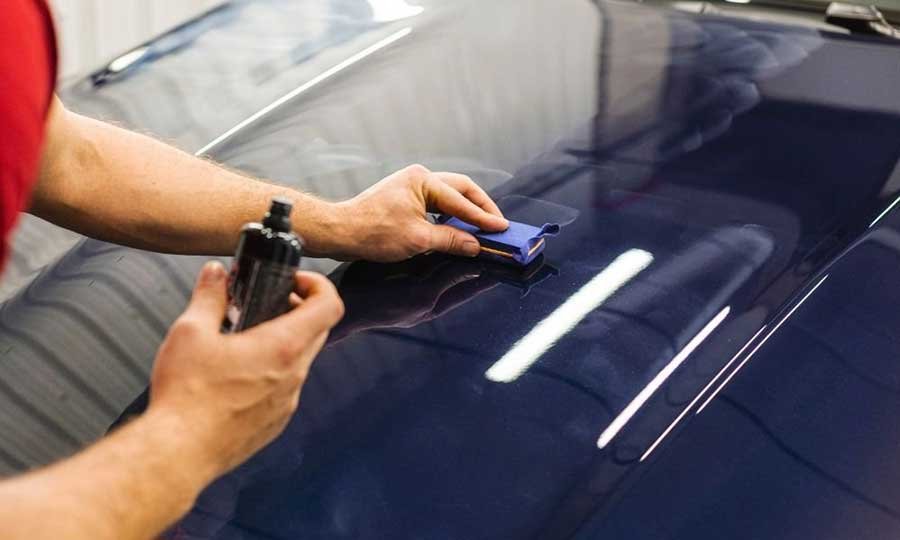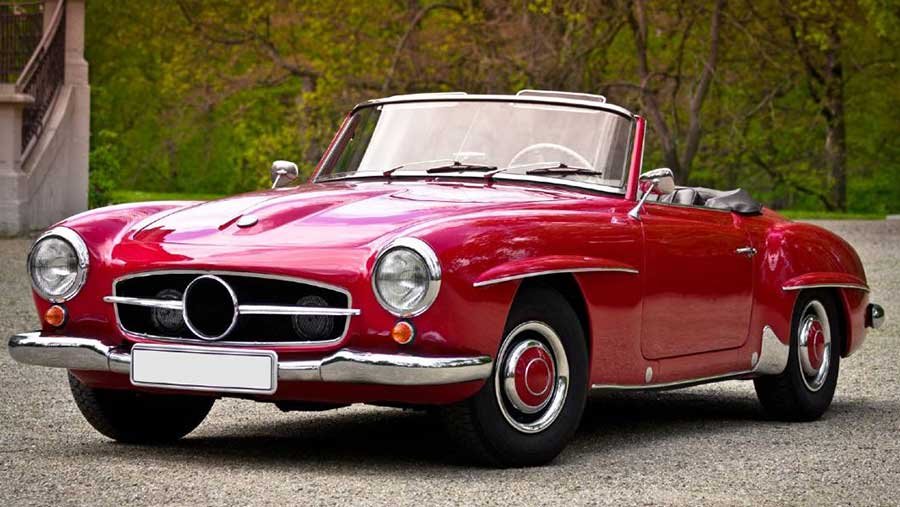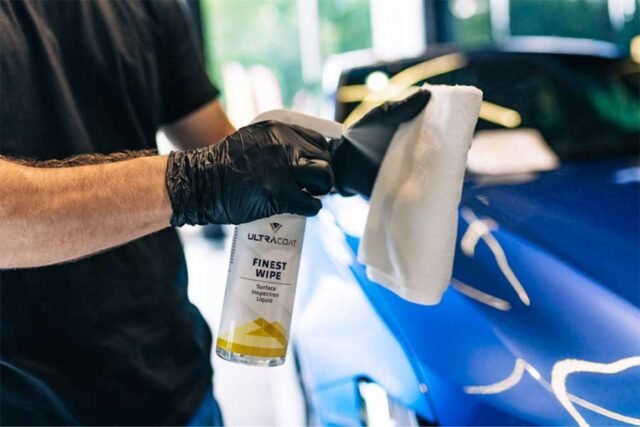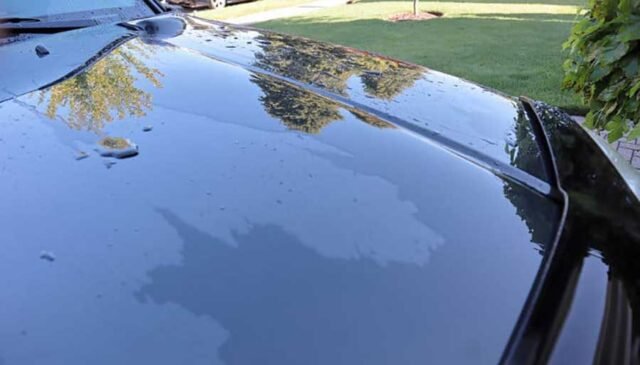If you own an aging vehicle or a cherished classic, you’ve probably wondered whether ceramic coating is a good idea. Is it worth applying a ceramic coat to an old car? Can ceramic coating help protect old car paint or restore its original shine?
With rising interest in vehicle preservation and aesthetics, ceramic coating for classic cars and older vehicles has become increasingly popular. But before you invest in this modern technology, it’s important to understand what ceramic coating is, how it works on aging paint, and whether it’s the right solution for your vehicle.
• What Is Ceramic Coating and How Does It Work on Older Cars?
Ceramic coating is a liquid polymer that chemically bonds with your car’s paint, forming a long-lasting protective layer. Unlike traditional wax or sealants, which wear off after a few weeks or months, a ceramic coat can last several years when applied properly.

For older cars, the process typically begins with extensive paint correction. Since ceramic coatings are transparent and only enhance what’s underneath, any scratches, swirl marks, or oxidation must be removed first. Once the paint is polished to its best possible state, the coating is applied in layers and cured.
The result? A glossy, hydrophobic surface that resists UV rays, dirt, chemicals, bird droppings, and environmental damage—perfect for protecting aging or delicate paintwork.
• Is Ceramic Coating a Good Idea for Aging or High-Mileage Vehicles?
In many cases, yes. A ceramic coat on an old car can help preserve the remaining paint, enhance its appearance, and reduce maintenance time. However, it depends on several factors, such as the current condition of the paint, the age of the vehicle, and your goals.
If your car has well-maintained original paint or a recently repainted surface in good shape, ceramic coating can act as a powerful shield against further deterioration. On the other hand, if the paint is severely peeling, rusting, or beyond correction, a ceramic coat may not offer much benefit without prior restoration.
• Benefits of Ceramic Coating for Older Vehicles
UV Protection and Oxidation Prevention
Older vehicles are especially vulnerable to UV rays, which can lead to fading, oxidation, and cracking of the clear coat. Ceramic coating offers a barrier that blocks out harmful UV light, helping to protect old car paint from further damage.
If your car spends a lot of time outside or is driven frequently in sunny conditions, a ceramic coat can slow down the aging process significantly.

Easier Cleaning and Maintenance
One of the most attractive features of ceramic coating is its hydrophobic nature. Water, mud, and grime slide off the surface easily, making washing and drying a breeze.
This is particularly useful for older cars, which may have more intricate or delicate parts. You can reduce the frequency of washes and avoid abrasive scrubbing that might damage aging paint.
Enhancing Faded Paint Appearance
Ceramic coating can also enhance the gloss and depth of older paintwork, especially after a good polish. It won’t fix damaged paint, but it will amplify the shine and clarity of whatever surface it’s applied to.
Many classic car owners choose ceramic coatings to bring back some of the luster that time has taken away, without resorting to a full repaint.
• When Is It NOT Worth Applying Ceramic Coating on an Older Car?
Despite its advantages, ceramic coating isn’t always the right solution. Here are a few cases where it might not be worth the investment:
• Severely Damaged Paint: If the paint is flaking, rusted, or bubbling, ceramic coating will not fix the underlying issues. In such cases, repainting or deeper restoration is a better starting point.

• Budget Constraints: High-quality ceramic coating isn’t cheap. If the cost of prepping and coating your car exceeds its value or your budget, it might be wiser to consider alternative protection methods like sealants or waxing.
• Minimal Use Vehicles: If your old car stays in a garage and is rarely exposed to the elements, you may not need the level of protection ceramic coating offers.
It’s also important to note that proper surface prep is crucial. Skipping paint correction will trap imperfections under the coating, possibly making them more noticeable.
• Ceramic Coating vs Repainting: Which Is Better for Old Cars?
Repainting and ceramic coating serve very different purposes. Repainting restores the color and finish of a vehicle, while ceramic coating protects what’s already there.
If your car’s paint is badly faded, chipped, or rusted, repainting is usually necessary before applying a ceramic coat. However, if the paint is in decent condition, ceramic coating can preserve it and prevent further deterioration.
Here’s a quick comparison:
| Aspect | Repainting | Ceramic Coating |
| Purpose | Restores paint | Protects existing paint |
| Cost | $2,000 – $10,000+ (depending on quality) | $500 – $2,000+ (depending on condition) |
| Durability | 5-10 Years (with good care) | 2-5 Years (depending on product) |
| Time Required | Several days to weeks | 1-2 days |
| Surface Restoration Needed | Yes | Yes (paint correction in needed) |
| DIY Option | Rare and difficult | Possible, but professional results better |
In many cases, the ideal approach is to repaint, correct the surface, and then apply a ceramic coat for long-term protection.
• Cost of Ceramic Coating for Classic Cars: Is It a Smart Investment?
The cost of ceramic coating an old car can vary widely, typically ranging from $500 to $2,000+, depending on:
• The condition of the paint
• Number of correction steps needed
• Type and brand of ceramic coating
• The size and shape of the vehicle
• Professional vs. DIY application
For older cars, additional prep work may increase the cost significantly, especially if the paint needs polishing or scratch removal.

So, is it worth the money?
Yes, if:
• Your vehicle has sentimental or collector value
• You want to preserve original paint
• You want to reduce maintenance and washing time
• You plan to keep the car for several more years
No, if:
• The car is nearing the end of its life
• You’re planning to sell it soon without adding value
• The paint is beyond repair without a full repaint
For many car enthusiasts, the long-term benefits outweigh the upfront costs—especially when the coating helps retain value and appearance.
• Final Verdict: Should You Ceramic Coat Your Old Car?
Ceramic coating for classic cars and older vehicles is not just a luxury; it can be a smart and practical investment when done right. It offers superior protection, enhances gloss, and significantly reduces maintenance—especially for paint that still has life left in it.
Whether you’re driving a well-preserved 1990s daily driver or a rare vintage classic, applying a ceramic coat to your old car can help keep it looking sharp and shielded against the elements.
However, make sure to assess your vehicle’s paint condition, do proper preparation, and set realistic expectations. Ceramic coating is not a magic fix—it’s a protective enhancement. But when used correctly, it can be one of the best ways to protect old car paint and ensure your ride stays stunning for years to come.






